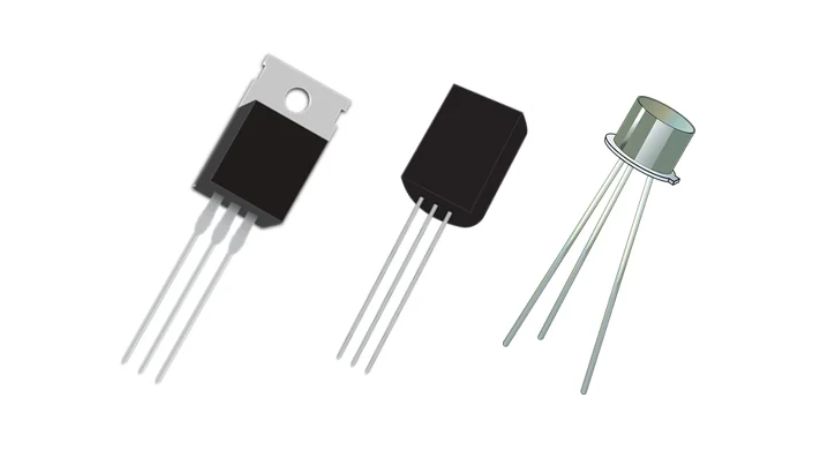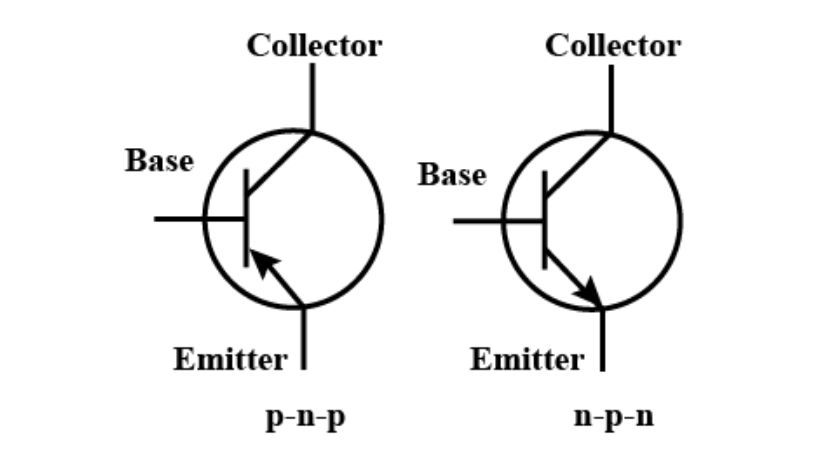Identifying transistors on a circuit board can be a challenging task, particularly when there are numerous components present.
Visual inspection and access to the schematic diagrams can make the identification easy. The transistor also has specific package types which make it unique from other components. The components on the circuit board have different symbols so the transistor also has symbols and this helps us in finding transistors if all the above methods fail we can use a digital multimeter to identify transistors in a circuit board.
This article will explore various methods and techniques that can help you identify transistors on a circuit board.
How to identify a transistor in a circuit board?
The transistor is a three-terminal semiconductor device used for various purposes. The terminals are emitter-base and collector in terms of bipolar junction transistors.

For field effect transistors they are called gate, source, and drain.
Transistors have revolutionized the field of electronics and have enabled the development of smaller, faster, and more efficient electronic devices.
Identifying transistors on a circuit board can sometimes be challenging, especially if there are many components present.
However, there are a few techniques you can use to help identify transistors. Let’s discuss these techniques in detail.
1. Visual inspection
Transistors can be identified through visual inspection. Transistors typically have three leads or pins, which are used for various connections within the circuit.
Scan the circuit board and identify components that have three leads. Keep in mind that not all components with three leads are transistors, so further examination is required.
Transistors often have a distinctive physical appearance that can help differentiate them from other components. Look for small, typically black or metallic casings.
Remember that this method may not always be reliable, it can help you locate transistors in some cases.
2. Schematic analysis
The other method is schematic diagram analysis if you have access to it. This is one of the effective methods for the identification of transistors.

If you got the circuit diagram of the circuit you are working on it.
Transistors are typically represented by specific symbols, such as triangles or rectangles with arrows or labels. These symbols may be accompanied by identification labels or component designators (e.g., Q1, Q2, etc.).
Trace the circuit connections from the transistor symbols to other components on the schematic. This can help you pinpoint the physical location of the transistors on the circuit board.
3. Package types
Transistor comes in different packages which makes them different from other electronic components.
You must have basic knowledge of the transistor’s various packaging.
Some common package types include TO-92, TO-220, SOT-23, SOT-89, and DIP (Dual Inline Package). Each package type has a distinct physical appearance and pin configuration.
Examine the circuit board’s components in comparison to the possible transistor package types that have been determined. Seek for parts that resemble the expected transistor packages in terms of size, shape, and pin configuration.
4. Circuit board symbol
The circuit board has specific symbols for different electronic components. The components like resistors, capacitors, and diodes are represented by R, C, and D.
The same is true for the transistor, in the circuit it has given the symbol ‘Q’. so wherever you see ‘Q’ along with any numeric then it will be a transistor.
The circuit board symbols make the identification of transistors easy and fast.
5. Testing with multimeter
Identifying a transistor on a circuit board using a digital multimeter involves determining the pin configuration and basic characteristics of the transistor. Here’s a step-by-step guide:
- Turn on the multimeter and set it to the diode testing mode.
- Examine the circuit board for a component that resembles a transistor. Transistors typically have three leads and may be labeled with part numbers or codes.
- Note the transistor code and identify the pin configuration.
- Place the multimeter probes on the collector (C) and base (B) pins of the transistor. The multimeter should show a voltage drop.
- You can also place the probes on the emitter (E) and base (B), the multimeter also shows a voltage drop.
- Based on the voltage readings, you can determine the transistor, and verify its pinout.
This is also a method that will help you to find a transistor in a circuit board.
Identify transistor in a circuit board
We have discussed the different methods for the identification of transistors. Now let’s practice on different circuit boards to find transistors.
The circuit is given below with different components.

As you can see the circuit board has components with specific symbols. As we talk earlier the transistor has the symbol Q in a circuit board which makes it easier to find it.
In the above circuit, there are two transistors with Q12 and Q13.
This next circuit is for your practice.

Now you have to identify the transistor in the above circuit. It is very easy, identify the transistor and let us know how many transistors are there in the circuit.
Conclusion
Identification of transistors is essential for understanding the circuit process and working.
It could take a mix of strategies and tactics to identify transistors on a circuit board.
By utilizing package types, schematic analysis, testing with a multimeter, and visual inspection, you can increase your chances of successfully identifying transistors.
Remember that patience, attention to detail, and a systematic approach are key when working with complex circuit boards.
With practice and experience, you will become more proficient in identifying transistors and other components on circuit boards.
This was all about the identification of transistors in a circuit board, I hope you have enjoyed this article.
Thank you…
Other useful posts:
